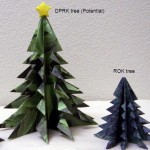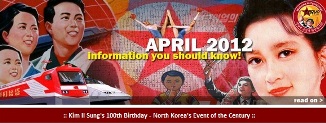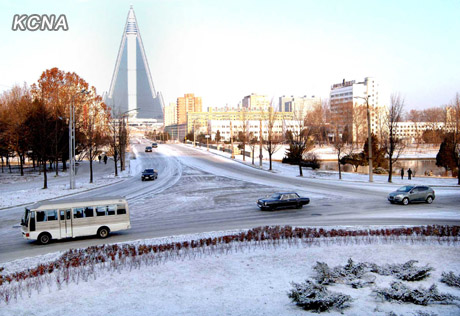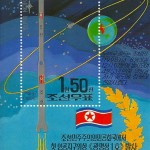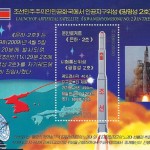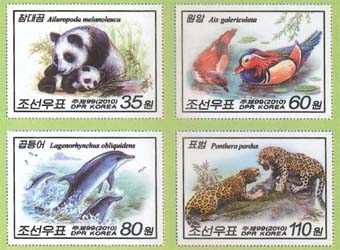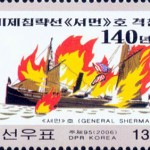It is often overlooked how much North Korea has changed over the past 20 years. Its Stalinist and militaristic facade is carefully maintained by the state, but in the new circumstances it is increasingly misleading. Behind this official veneer of militant posters and goose-stepping soldiers, the society itself has changed much.
In a nutshell, the past two decades were the time when the state was steadily retreating from the private life, and also was losing its ability (perhaps also its will) to control the daily activities of its subjects as well as how they made a living. One of many significant changes has been the steady decline in the significance attached to family background (known as songbun in North Korean parlance) – once the single most important factor that determined the life of a North Korean.
Family background did matter in other communist countries as well, but to a much lesser extent. For example, in the Soviet Union immediately after the 1917 communist revolution, scions of aristocrats, descendants of priests, and merchants faced many kinds of discrimination. It was more difficult for them to enter a college or to be promoted, and they were more likely to be arrested for alleged political crimes. However, this discrimination had disappeared by the late 1940s, so in the days of my youth, in the 1970s and 1980s, it had become quite normal in the USSR to boast about real or alleged aristocratic family roots.
North Korea is very different. In 1957, the authorities launched a large-scale and ambitious investigation of the family backgrounds of virtually all North Korean citizens. As a result of this and subsequent investigations, by the mid-1960s the entire population was divided into a number of hereditary groups, somewhat akin to the estates of medieval Europe. Career chances and life prospects of every North Korean were determined, to a very large extent, by his membership in one of these strictly defined groups.
The major criteria of classification were quite straightforward: the songbun (origin) of the North Korean was largely defined by what his or her direct male ancestors did in the 1930s and 1940s.
The official songbun structure was quite elaborate and changed over time. However, at the first approximation, there have been three groups in North Korea, usually known as “core”, “wavering” and “hostile” classes. Every single North Korean had to belong to one of these groups.
The “hostile class” included people whose ancestors in or around 1945 were engaged in activities that were not to the regime’s liking. Among others, this group included descendants of clerks in the Japanese colonial administration, Christian activists, female shamans, entrepreneurs, and defectors to the South. Members of the hostile class faced the greatest number of restrictions: They could not live in Pyongyang or other major cities and they could not be admitted to good colleges or universities. People whose songbun was exceptionally bad would not even be drafted into the military.
Members of the “core class” included those whose direct male ancestors contributed toward the foundation and strengthening of the Kim family regime. They were descendants of anti-Japanese guerrillas, heroes of the Korean War, or party bureaucrats. For all practical purposes, over the past half-century, only these people could be promoted to key positions in the North Korean state and party bureaucracy. They constituted the hereditary elite.
In the days of Kim Il-sung’s rule, from the early 1960s to the early 1990s, songbun was of paramount significance. It determined where people lived and worked and even what they ate. Most marriages were also concluded between people of the same or similar songbun.
It was also important that the songbun was, in essence, unchallengeable. It was inherited from one’s father and was then bestowed on one’s children. The mother’s songbun did not matter. I know a couple where the husband’s songbun was bad (he was a “landowner’s grandson”), but the wife had the best songbun imaginable, being a descendant of a family that once was involved with the anti-Japanese guerrillas of Kim Il-sung. Frankly, such a marriage was rare and unequal – in most cases women of such standing would be as reluctant to marry a man of low origin as, say, a European noble lady from the 17th century. However, in this particular case the marriage did take place, much against the resistance of the girl’s parents.
In due time, though, the spouses discovered that the wife’s songbun did not really matter. Their daughter, a promising athlete, could not be sent for further training, since her songbun was bad: the great-granddaughter of a minor landlord could not compete on the national level and, for that matter, could be accepted only to a junior college.
In Kim Il-sung’s era – that is, before 1994 – the state was in near-complete control of an individual’s life. The only way to achieve high status and affluence was to climb the official bureaucratic ladder. As a North Korean friend put it in the late 1980s: “I hate officials, but I want to become an official, because in our country, only officials can live well.” Indeed, in Kim Il-sung’s North Korea all material goods were distributed by the state and almost all income was derived from work in state industry or the state bureaucracy.
But things started to change dramatically in the early 1990s. The state sector, suddenly deprived of Soviet subsidies, collapsed. North Koreans suddenly discovered that food rations were no longer forthcoming and their official monthly salary would only buy 1 or 2 kilograms of rice. Predictably, mass starvation followed, killing at least a half-million people.
To survive, the North Korean people literally rediscovered capitalism. Estimates vary, but the consensus is that over the past 10-15 years, the average North Korean family has come to draw most of its income from what can be described as black-market activities. Actually the so-called black market is not particularly black, since the government – in spite of occasional crackdowns – has tacitly tolerated its existence since the mid-1990s. Nowadays North Koreans work on individual fields on steep mountain slopes, they establish private workshops to produce garments and assorted consumer goods, and they smuggle and trade.
The new and increasingly dominant unofficial economy is in essence capitalist. As such, it rewards those who are sufficiently industrious, greedy, intelligent, ruthless and disciplined – and in some cases, it rewards them handsomely. Social inequality is growing and many a successful merchant or workshop owner lives better than a middle-ranking bureaucrat. A successful entrepreneur might have all trappings of luxury – including, say, a Chinese motorbike or a refrigerator, which in North Korea can be seen as roughly equivalent to a Lexus and a yacht.
The success in the emerging new economy is usually unrelated to one’s songbun. In fact, sometimes it seems that people with bad songbun tend to be more successful nowadays – perhaps because back in the 1990s they had no expectations of the state and were the first to jump into the murky waters of the emerging North Korean market economy.
Of late, the previously attractive career avenues have lost much of their allure. For example, in the past, many North Koreans were willing to do their long and tedious military service, which lasted some seven to 10 years. This popularity was easy to explain: For a person with average songbun, this would be the only way to get into the bottom tiers of the bureaucracy. As a North Korean told it, recalling the time of her youth, the 1970s: “The only way to become somebody was to go into the military, join the Korean Workers Party while on the active service, and then come back to become an official.”
Recently, however, military service has lost much of its popularity. Few people would be willing spend 10 years in a squalid barracks so as eventually to become a minor official in the city administration. Such a job is still attractive, to be sure, but it seems preferable to become a smuggler or a merchant, whose income far exceeds that of a petty bureaucrat.
Still, on the very top, songbun is important, since the key administrative positions are held by those with good songbun, and a mid- or high-level official can make a nice income by milking the private economy. Hence people with good songbun still often think about capitalizing on the real or alleged contribution of their ancestors to the establishment of the North Korean regime. However, for a majority the emergence of markets opened a new, faster and more attractive (but also more risky) avenue of social mobility.
North Korean society has become defined by one’s relationship to money, not by one’s relationship to the bureaucracy or one’s inherited caste status. Money talks, and for better or worse, in North Korea, money talks ever louder. As a female refugee in her early 40s put it recently: “Under Kim Il-sung, songbun was very important, it decided everything. Under Kim Jong-il, things are different – your family background still matters, but money nowadays is more important than social background.”

